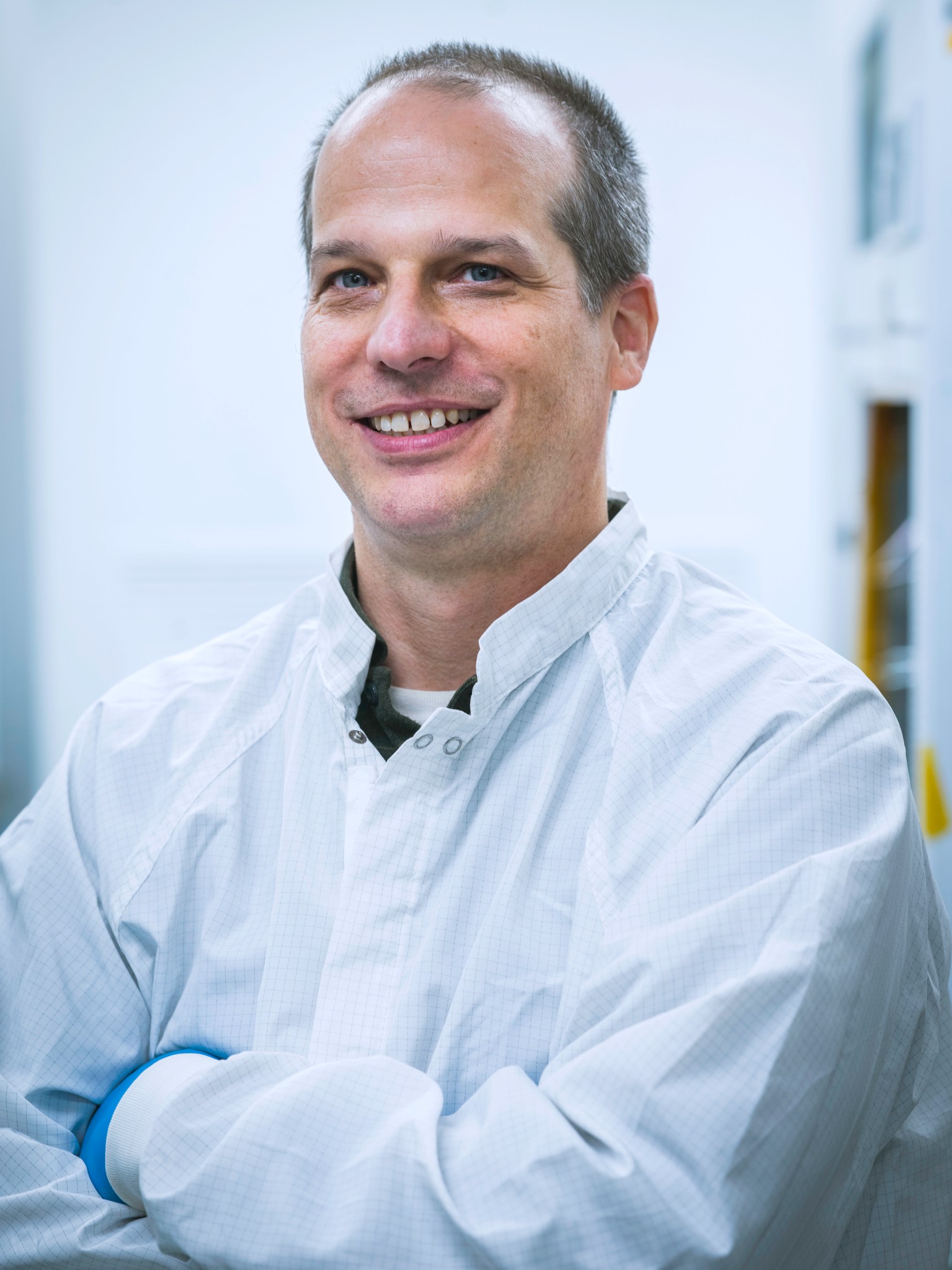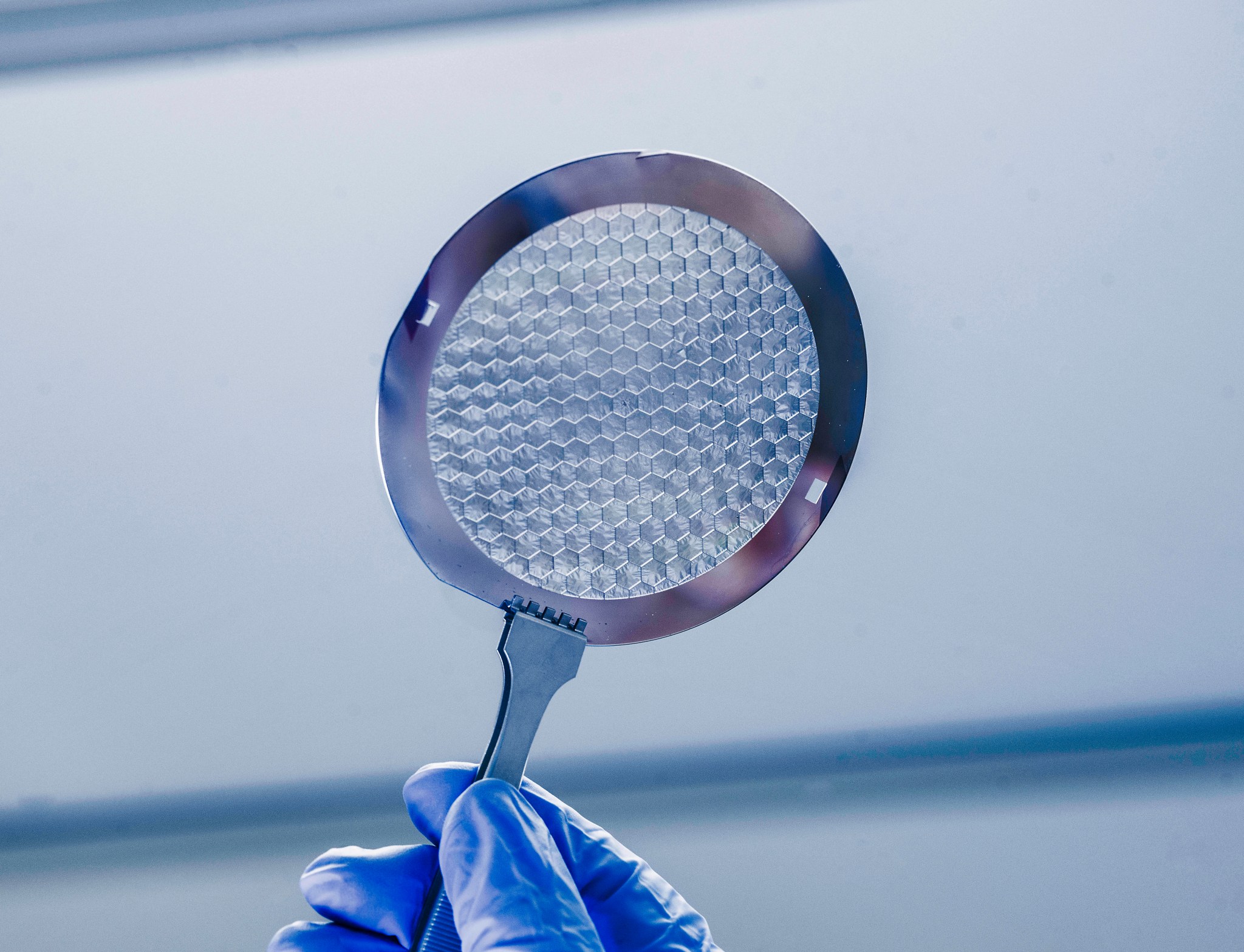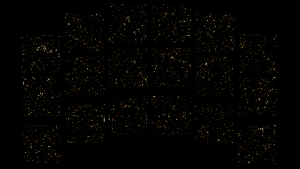Goddard Engineer Kevin Denis receives innovation award for photon sieves.
Goddard’s Office of the Chief Technologist named engineer Steven Denis as the FY23 Internal Research and Development (IRAD) Innovator of the Year, an honor the office bestows annually on individuals who demonstrate the best in innovation.
Denis demonstrated persistence and innovation in developing hair-thin photon sieves to focus extreme ultraviolet light – a difficult wavelength to capture. Thin membranes matter for solar science, he said, because these sieves transmit up to seven times more light than thicker materials. Denis’s work will open new ways to study the Sun in better detail and understand its influence on Earth and the solar system.
Working closely with solar scientists over many years through Goddard ’s IRAD, or Internal Research and Development program, Denis developed new ways to create wider and thinner membranes of silicon and niobium. These photon sieves, created in Goddard’s Detector Development Laboratory, are so thin they must be supported by a honeycomb lattice of thicker silicon to prevent tearing. Etched with microscopic holes in a circular pattern, they refract light similar to Fresnel lenses used in lighthouses. Extreme ultraviolet light passing through this sieve is bent gradually inward to a distant receiver.
“It’s a sheer physical challenge to construct sieves with such precision,” said Goddard heliophysicist Dr. Doug Rabin. “Their smallest features are a few microns across. Kevin has really responded to that challenge with very creative solutions.”
Denis’s photon sieves should eventually be able to resolve features near the surface of the Sun 10 to 50 times smaller than can be seen today with the Solar Dynamics Observatory’s EUV imager, Rabin said.
Denis takes inspiration from working closely with scientists to overcome barriers to advancing their field, he said. “With this project in particular, scientists Rabin and Adrian Daw have done a great job using the sieves in near-term science applications while we push the technology for larger and more capable missions.”
Denis’s work was highlighted in Physics Today, a publication of the American Institute for Physics, for its importance in advancing pivotal technology that can address outstanding questions of how coronal heating and acceleration happens in the Sun’s lower atmosphere.
With two patents already awarded based on this project, Denis is submitting a new application for his latest fabrication process.
While he continues to push the limits of engineering, Denis said he is looking forward to seeing them used in missions of increasing complexity and capability. “It’s a great motivation to see they are going to be used for new science.”
By Karl B. Hille
NASA’s Goddard Space Flight Center in Greenbelt, Md.






























